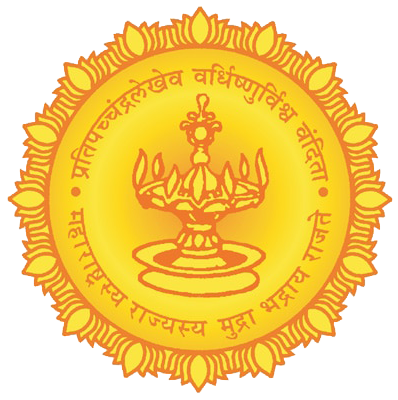Craftsman Training Scheme
Objectives
The Craftsman Training Scheme was introduced by government of India in 1950 to ensure a steady flow of skill workers in different trades for the domestic Industries, to raise quantitative Industrial Production by systematic training , to reduce unemployment among the educated youth by providing them employable training , to cultivate and nurture a technical and industrial attitude in the minds of younger generation. The scheme, most important in the field of vocational training , has been shaping Craftsmen to meet the existing as well as future manpower need, through the vast network of ITIs in the state. The day-to-day administration of ITI under the Craftsman Training Scheme was transferred to State Government with effect from the year 1956.
National Council for Vocational Training
The government of India transferred the administration of ITIs to the concerned State Government, while retaining the functions of co-ordinating Craftsman Training and laying down the training policy with it and the Director General of Training is looking after these functions. This decision has further accentuated the need for central agency for assisting or advising the Central Government in the discharge of responsibilities regarding Craftsman Training. It has accordingly been decided in consultation with the State Government to set-up a National Council for Vocational Training. Accordingly, with a view to ensure and maintain uniformity in the standards of training all over the country, the National Council for Vocational Training, an advisory body, was set-up by the Government of India in the year 1956. The council has been entrusted with responsibilities of prescribing the standards and curricula for Craftsman Training, Advising the Government of India on the overall policy and programme, conducting All India Trade Test and awarding National Trade Certificate. The National Council is chaired by Minister of Skill Development & Entrepreneurship with members representing Central and State Government departments, employer’s and worker’s organization, professional and learned bodies, AICTE, Scheduled Cast and Scheduled Tribe, All India Women Organization etc. It is essential for all ITIs/ITCs to get affiliated to NCVT in each trade / unit before admitting the trainees.
State Council for Vocational Training
The State Council for Vocational Training is a counter part of NCVT at State level and it plays the same role, that is played by NCVT at National level. The SCVT is Chaired by the Secretary of Skill Development & Entrepreneurship.
Status Of Craftsman Training Scheme In Maharashtra
In Maharashtra State there are 417 Government & 466 Private Industrial Training Institutes with Intake Capacity 93,481 & 42,705 respectively.
Training in ITIs is given in 79 different trades. Duration & eligibility criteria for these trades are as follows
| Eligibility | One Year Duration Courses | Two Year Duration Courses | Total | ||
|---|---|---|---|---|---|
| Engineering Trades | Non-Engineering Trades | Engineering Trades | Non-Engineering Trades | ||
| SSC Pass | 19 | 20 | 29 | 01 | 69 |
| SSC Pass/Fail | 05 | 02 | 02 | 00 | 09 |
| HSC Pass | 00 | 01 | 00 | 00 | 01 |
| Total | 24 | 23 | 31 | 01 | 79 |
The training skills of these courses are given as per the syllabus prescribed by the Ministry of Skill Development & Entrepreneurship, Government of India, New Delhi.
On successful completion of training the National Council of Vocational Training(NCVT) Certificate is issued by the Directorate General of Training, New Delhi. This certificate is internationally recognized.
Present Status of the No. Of Institutes & Available Seats (August 2017)
| Type Of Institute | No. of Institutes | Available Seats | ||
|---|---|---|---|---|
| Government | Private | Government | Private | |
| General | 307 | 427 | 75751 | 38658 |
| Tribal | 61 | 0 | 11980 | 0 |
| Women | 15 | 4 | 3739 | 251 |
| Tribal Ashram ITI | 28 | 0 | 1331 | 0 |
| SCP ITI | 4 | 0 | 293 | 0 |
| Minority | 2 | 34 | 387 | 3787 |
| Defense | 0 | 1 | 0 | 209 |
| TOTAL | 417 | 466 | 93481 | 42905 |
| 883 | 136386 | |||
For maximum utilization of available basic facilities & to increase number of skilled manpower in it is, training is given in 3 shifts in ITIs which are in Corporation area. In 234 & 142 Government ITIs, training is given in 2 shifts & 1 shift respectively.
Government ITI Directory August 2017
Private ITI Directory August 2017
Tradewise List of ITI August 2017
Priority For Women Education
To promote women for Vocational Education, 15 ITIs are started for women only. more over, in the ITIs which have been started w.e.f. 1990 with 6 & 8 trades, in which 2 trades are reserved for women and ITIs with 4 trades are having 1 trade for women. In addition to this, there are 30% seats are reserved for women in General ITI’s.
Addmission To ITI
Online Admission Process is implemented in Maharashtra from Year 2013. Please visit http://admission.dvet.gov.in for further details.
Training Fee/Deposit/Concession
| S.No | Details | Government ITIs | Private ITIs | ||||||
|---|---|---|---|---|---|---|---|---|---|
| General Category | Reserved Category | IMC Seats | OMS | NRI | MS | OMS | NRI | ||
| Annual Training Fee | |||||||||
| 1 | Machine Group – Engineering Trades | 1200 | – | 30000 | 45000 | 60000 | Pls. visite http://admission.dvet.gov.in/ | ||
| Non Machine Group – Engineering Trades | 1000 | – | 25000 | 37500 | 50000 | ||||
| Non Engineering Trades | 800 | – | 20000 | 20000 | 40000 | ||||
| 2 | Fees For Identity Card | 50 | 50 | 50 | 50 | 50 | |||
| 3 | Fees For Library | 100 | 100 | 100 | 100 | 100 | |||
| 4 | Fees For Internet Facility | 100 | 100 | 100 | 100 | 100 | |||
| 5 | Fees For Cultural Activities | 100 | 100 | 100 | 100 | 100 | |||
| 6 | Fees For Hostel | 1200 | 1200 | 1200 | 6000 | 12000 | To be decided by concerned ITI | ||
| Advanced payment to be done at the time of Admission | |||||||||
| 7 | Training Deposit | 500 | 500 | 500 | 500 | 500 | 500 | 500 | 500 |
| 8 | Library Deposit | 100 | 100 | 100 | 100 | 100 | 100 | 100 | 100 |
| 9 | Hostel Deposit | 1000 | 1000 | 1000 | 1000 | 1000 | 1000 | 1000 | 1000 |
Age Limit
The Candidates seeking admission to ITI should have completed 14 years of age. There is no maximum age limit for admission.
Subsistence Allowance
Under the Tribal Scheme the trainees residing & not residing in Hostels are given subsistance allowance of Rs.600/- & Rs.500/- respectively.
Stipend
50% of students admitted in ITI are paid stipend @Rs. 40/- per month.Candidates belonging to reserved category are eligible for stipend @Rs. 60 /- per month. Out of which, Rs. 20/- per month is contributed by the Social Welfare Department.
Scholarship
Post Matric Scholarship is applicable to Scheduled Caste & Minority trainees.
Examination
The Director of Vocational Education and Training conducts the All India Trade Test and awards Provisional certificates to the successful candidates. The Final Certificates are awarded by the Directorate General of Training, New Delhi.
Opportunities For ITI Pass-Outs
- During ITI training the trainees acquire practical skills of the trades and they are capable of doing production jobs under the supervision of skilled worker. At this stage they are categorised as semi-skilled worker.
- Under Apprentice Act-1961, the ITI pass-outs can be engaged in the relevant designated trade by the industry having adequate training facilities. The candidates so engaged will learn the productive / marketable skills and become suitable for employment.
- After passing the NCVT examination if the candidate, instead of taking job with industry, he is willing to start small business, he can do so with the assistance of government agencies promoting such activity and providing necessary assistance.
NCVT MIS
Raw Materials Required for Practical






